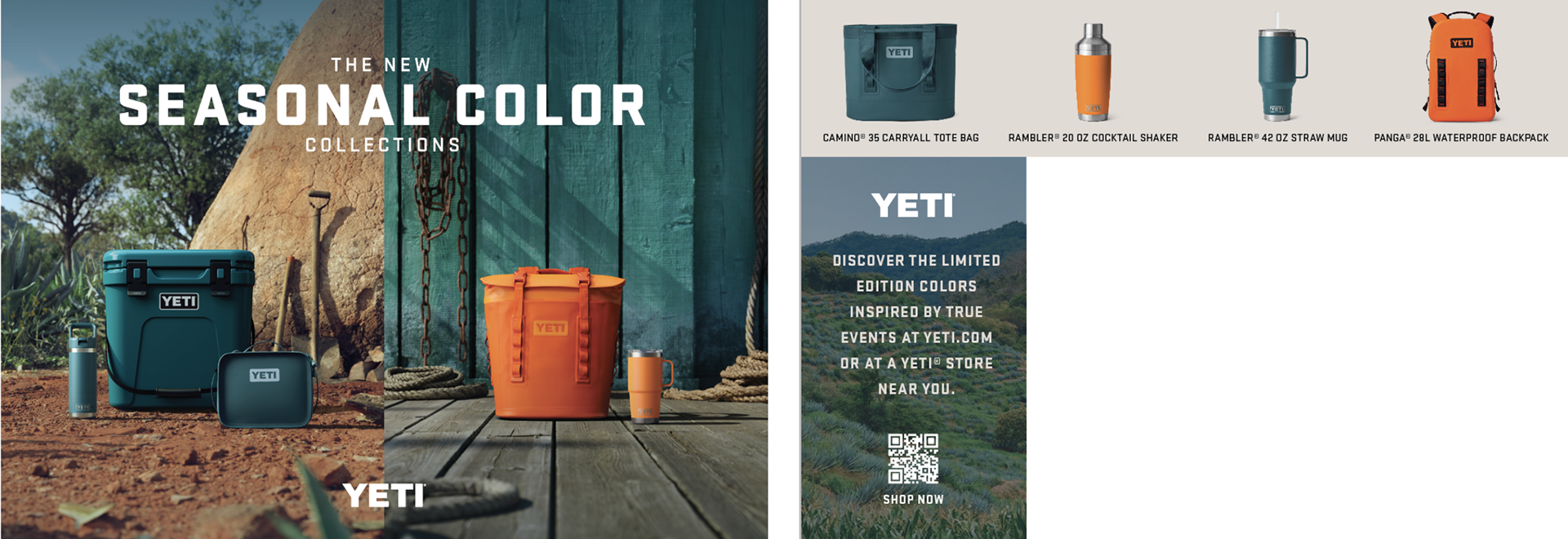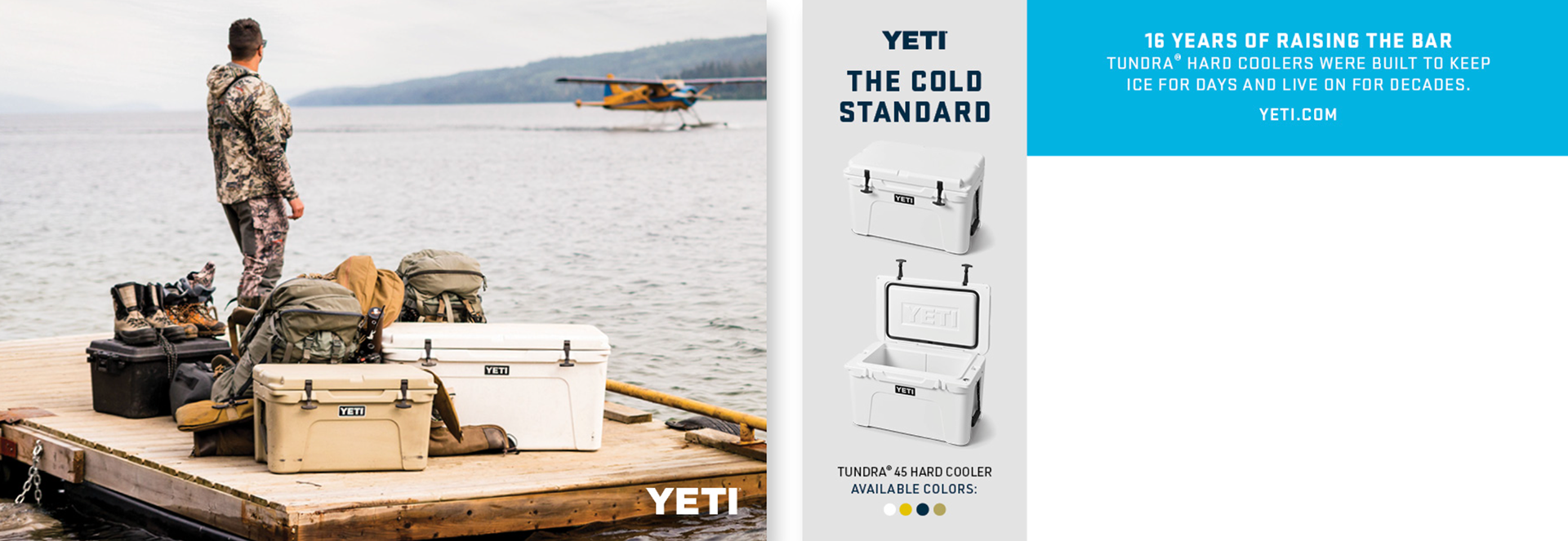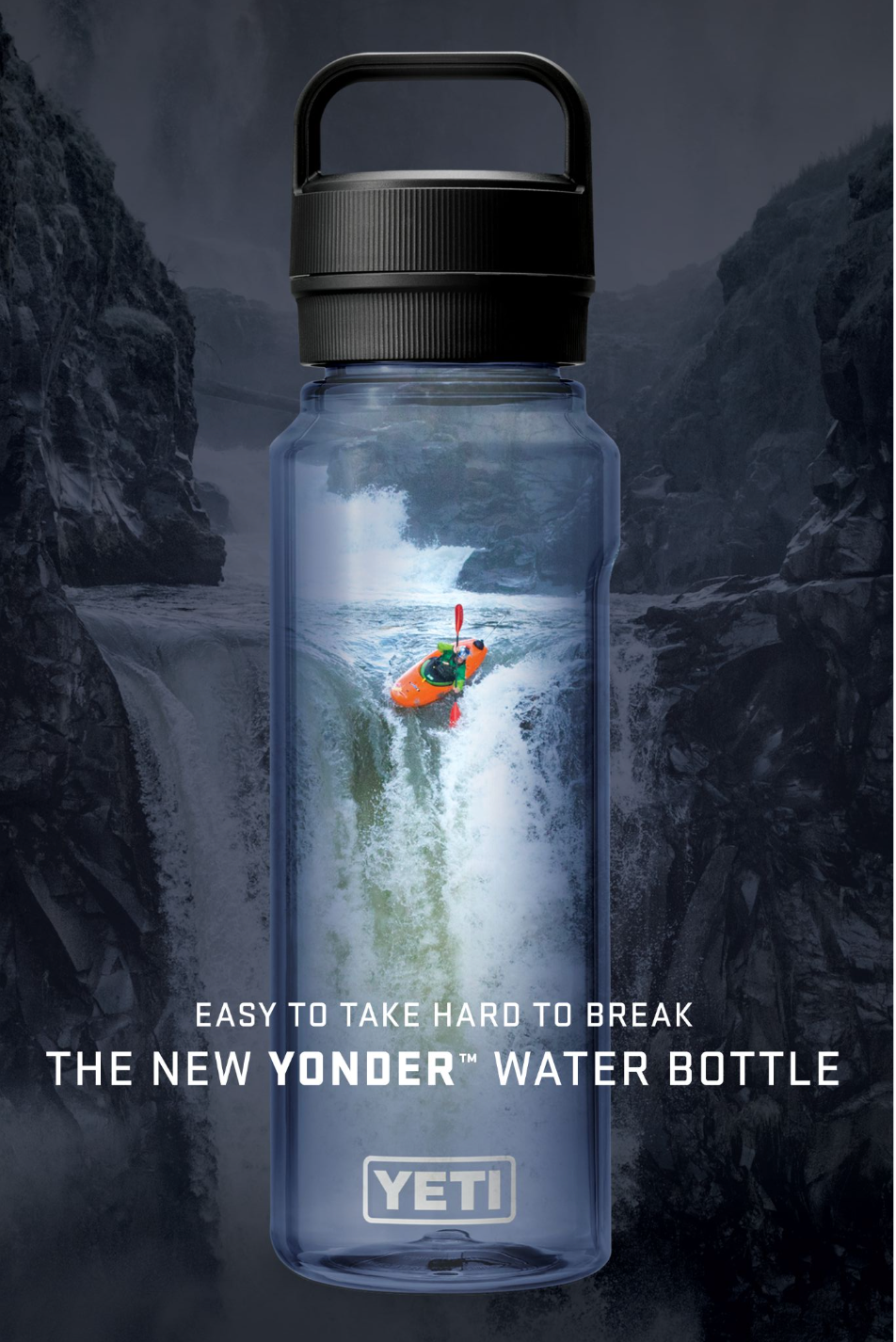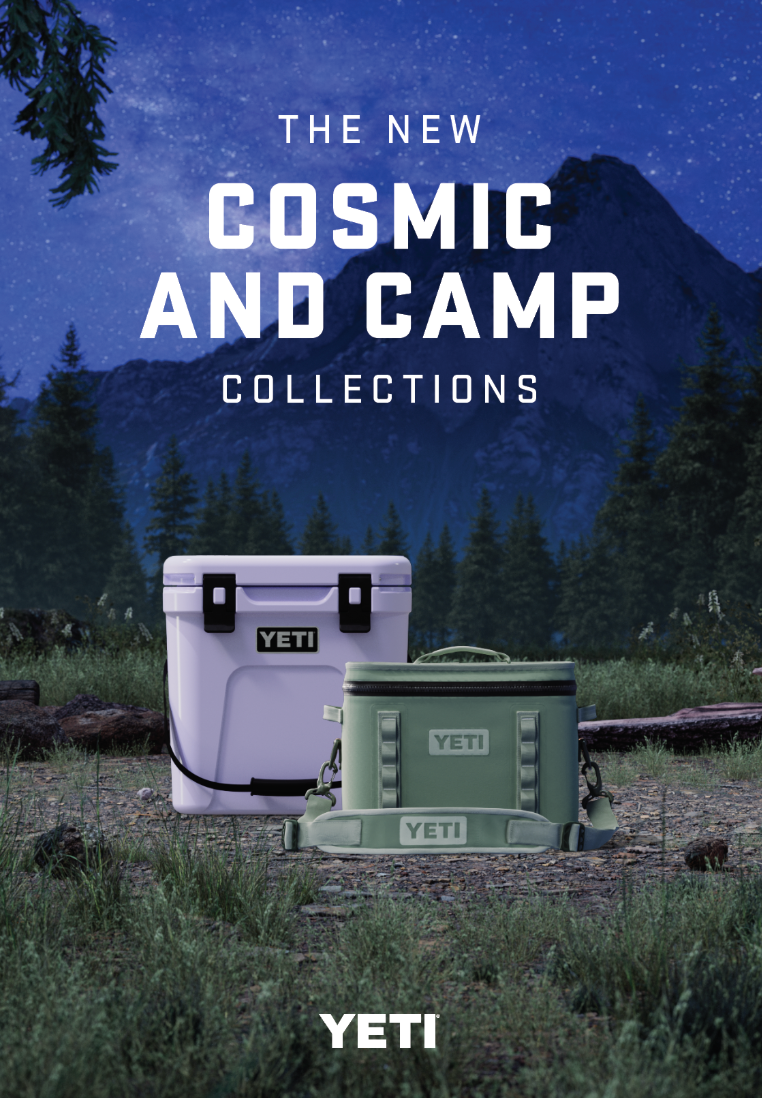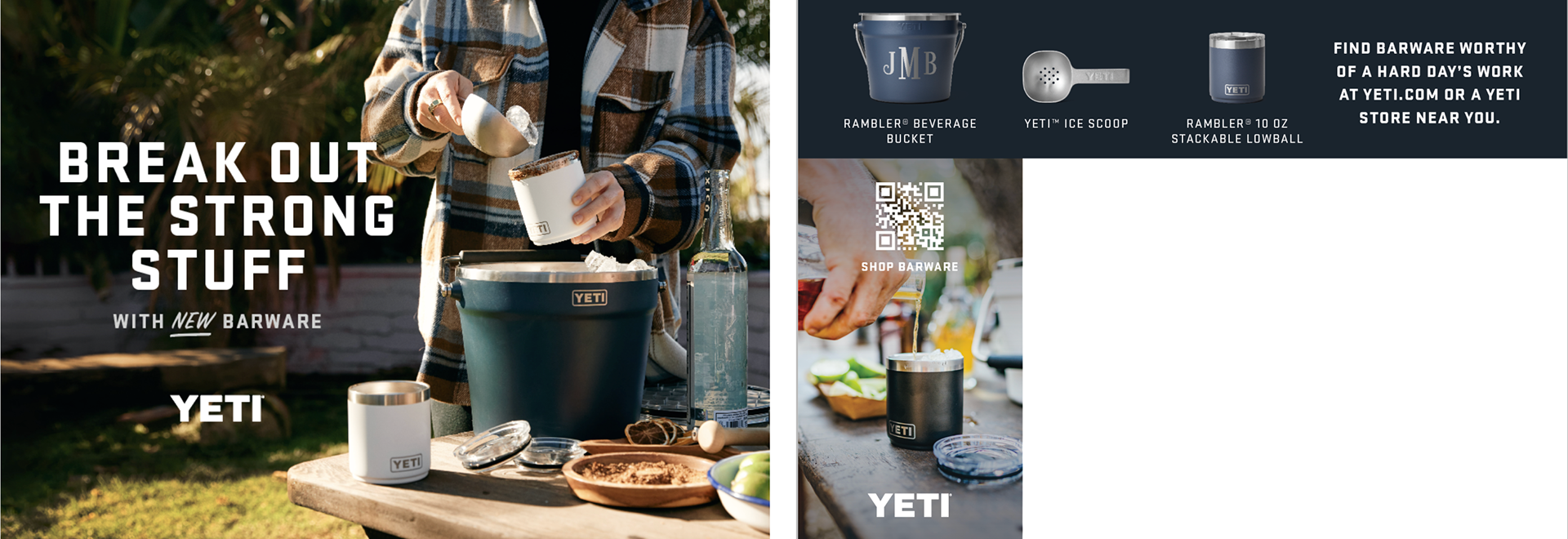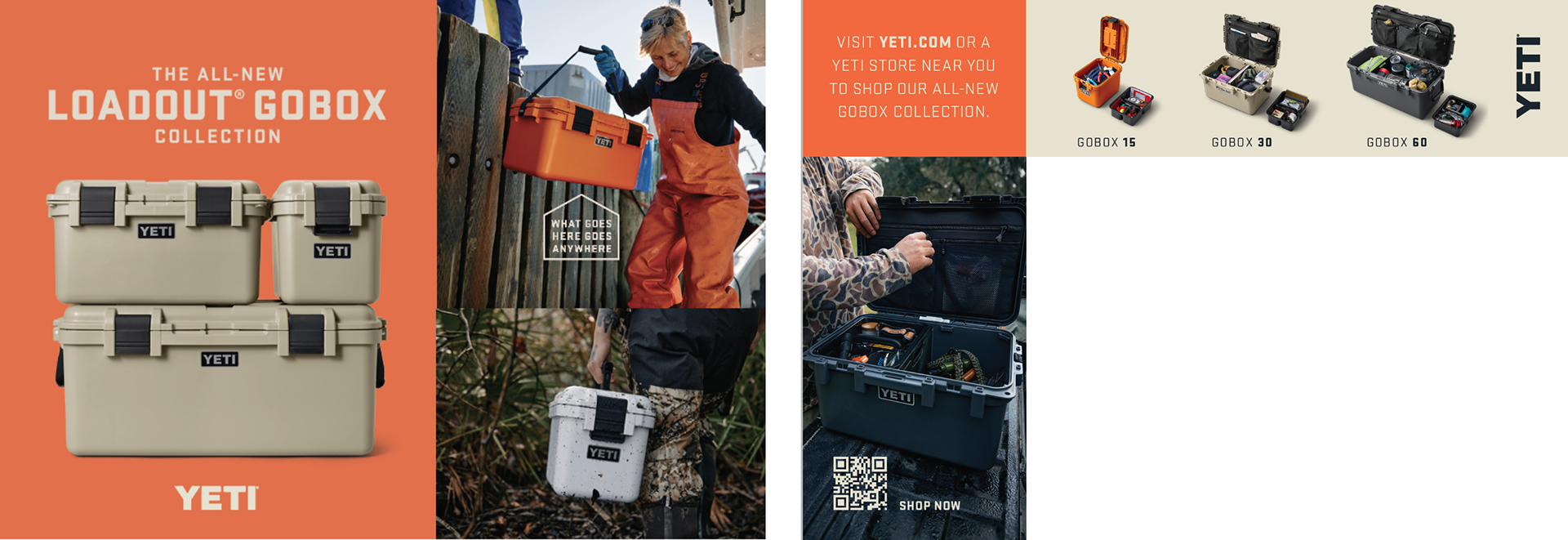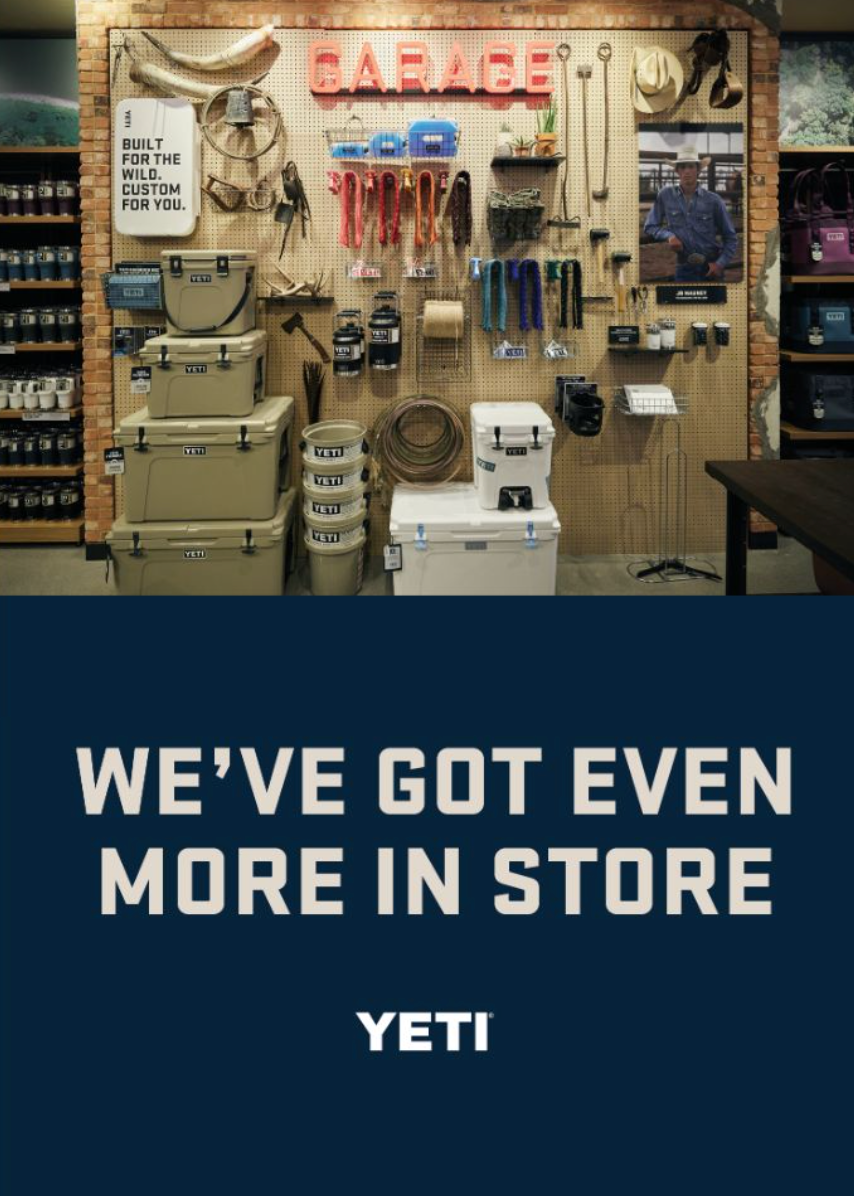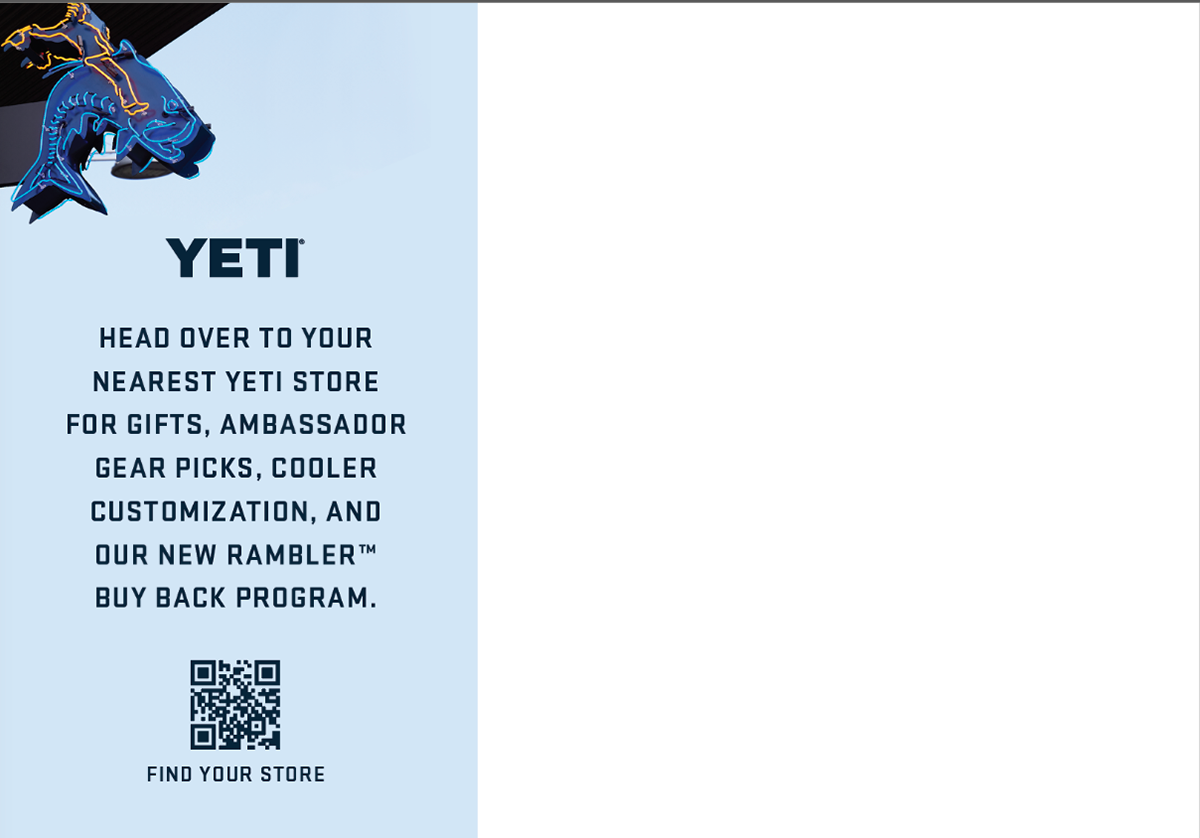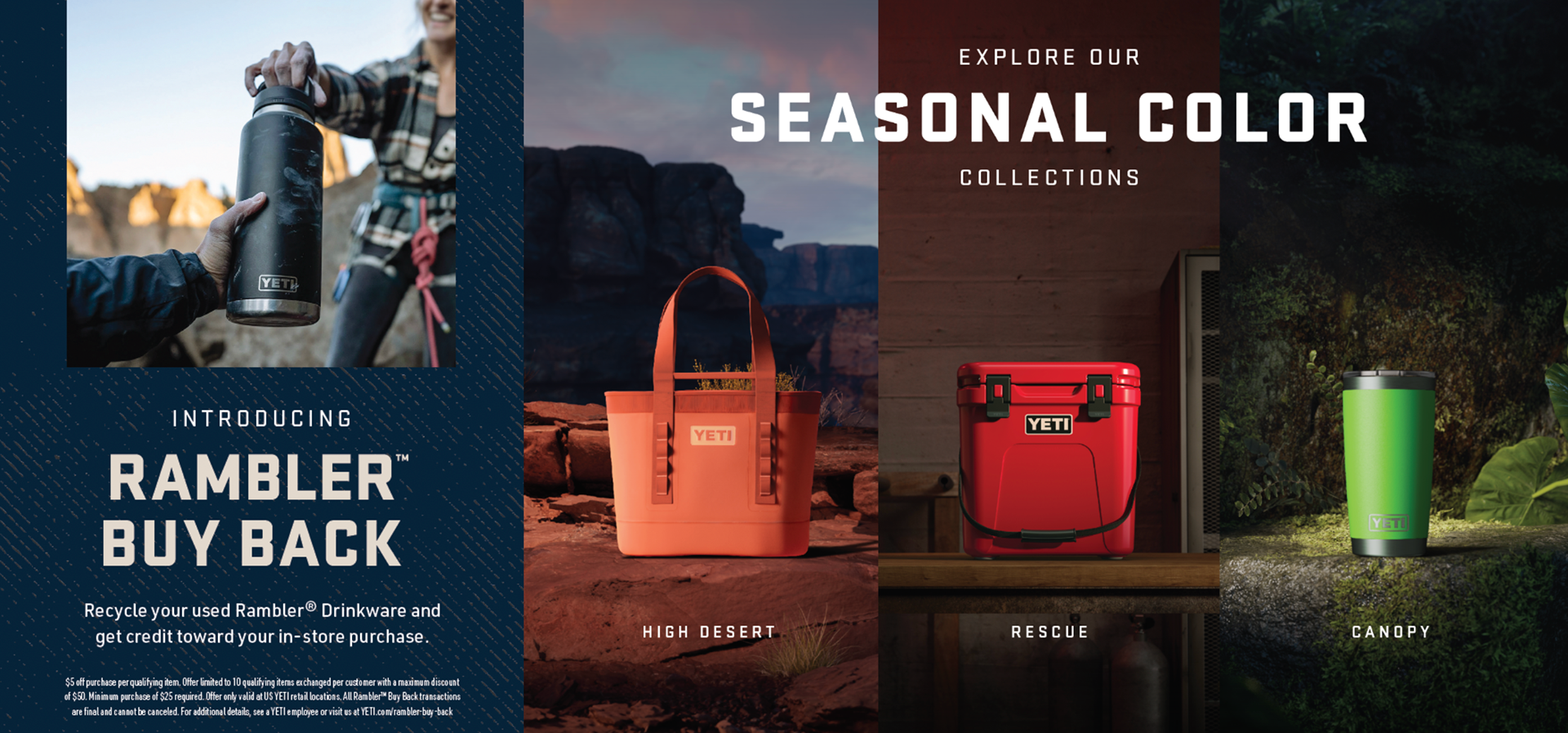A new medium for a big company challenge.
Ever since I arrived at YETI, we've had a big AOV challenge. Getting people to increase their purchase size when there's such a wide range of price points has proven elusive -- both for the company and creatively. What do you do when it seems like you've pulled all the performance levers? Here's how we branched out into a new medium you wouldn't expect.
The challenge.
YETI’s product mix provides a unique business challenge. We offer $400 coolers and $30 mugs. The key to growth across the board is increasing AOV. The bigger the basket, the better. But getting cooler customers to add drinkware and drinkware customers to make the big financial jump to a cooler has always been an elusive task.
To help, the eComm team made bundling and add-ons easier during the checkout process. But the company still needed more performance, so they turned to us to see if a more branded approach could work.
To help, the eComm team made bundling and add-ons easier during the checkout process. But the company still needed more performance, so they turned to us to see if a more branded approach could work.
The idea.
We spent a while pulling all the traditional performance levers. And while they worked in their own unique way for their own unique metrics, they weren't really solving the challenge. Some got close, but they felt like click at worst. At best, they lacked the type of brand refinement we use as our baselayer gutcheck. So we decided to look beyond the traditional performance channels.
The insight we used is one that's true to our customer core: YETI’s high-value customers don’t just spend more money with the company, they align themselves with the brand. While they might not be out chasing whitewater every weekend, they aspire.
We decided to find those high-value customers and send them well-designed printed postcards. Our goal was to make them feel worthy of being hung on a refrigerator, but also valuable enough to introduce new products and drive them to purchase. Most importantly, we had to be able to track their behavior and adjust our creative accordingly.
The insight we used is one that's true to our customer core: YETI’s high-value customers don’t just spend more money with the company, they align themselves with the brand. While they might not be out chasing whitewater every weekend, they aspire.
We decided to find those high-value customers and send them well-designed printed postcards. Our goal was to make them feel worthy of being hung on a refrigerator, but also valuable enough to introduce new products and drive them to purchase. Most importantly, we had to be able to track their behavior and adjust our creative accordingly.
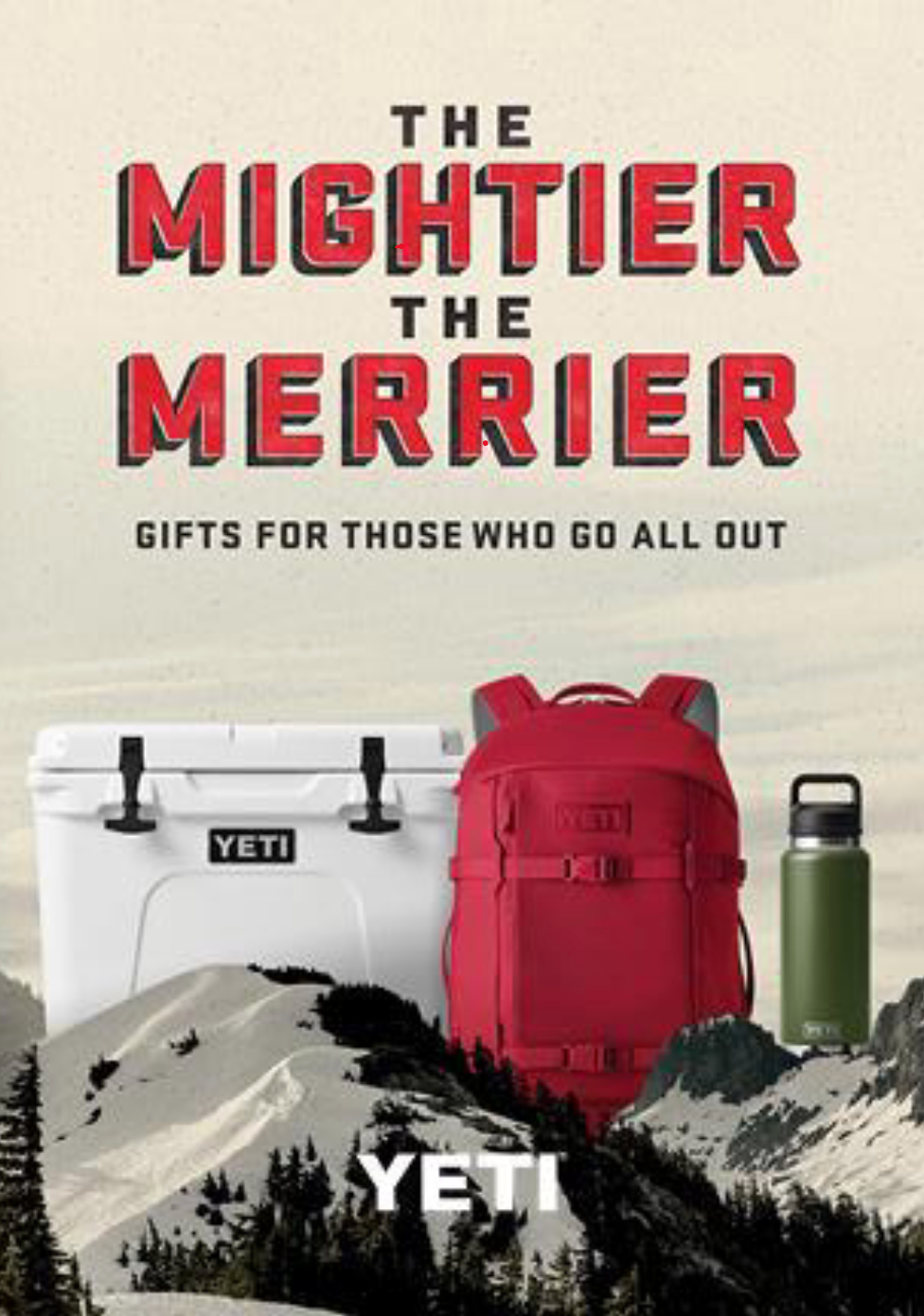
Our very first postcard. The design still makes me cringe a little.
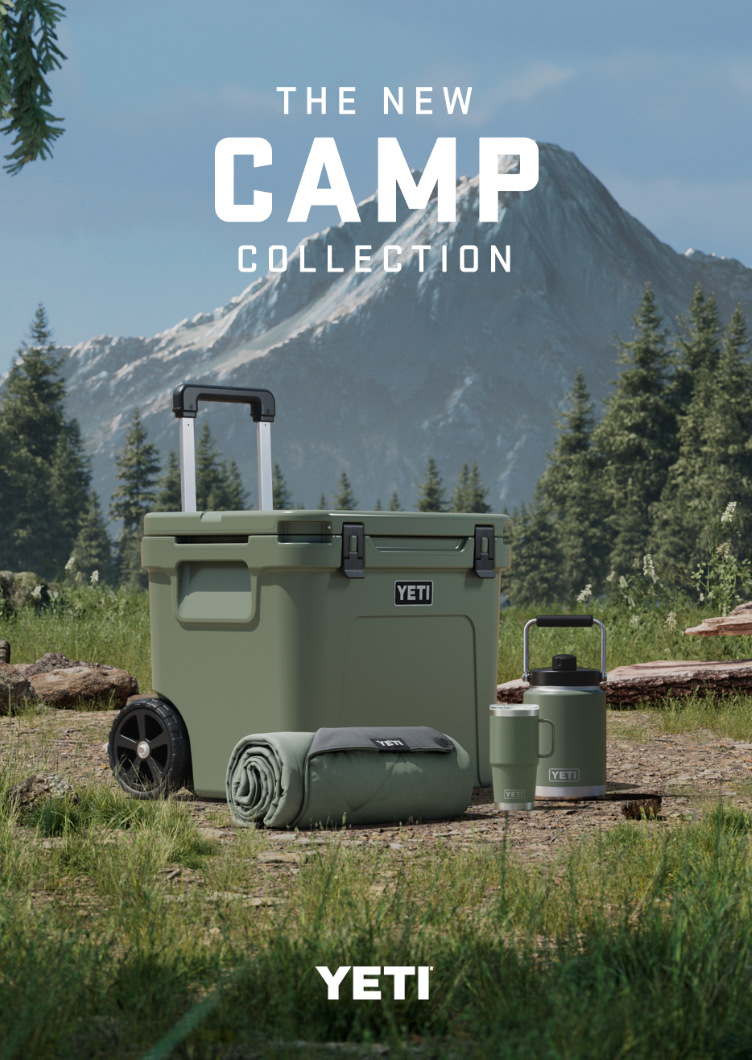
After three years of testing, we figured out what works.
Measure, learn, and optimize: a four-year journey.
We knew this wouldn't be a one-and-done performance play. If we wanted to create a long term solution vs merely juicing the numbers, we had to develop a framework for a plan: measure, learn, and optimize. We had to find the right customers and moments, measure their engagement against different send moments, and then optimize our plan until our program became dialed in and we could simply focus on the creative instead of the eyeballs we needed to attract. The result was a four-year plan.
Year 1: we launched a new print performance channel and sent postcards across key eComm calendar moments (Christmas, Valentines Day, and Fathers Day). We wanted to see how well they performed against traditionally high-performing holiday moments for the company. This approach would give us a base layer of insight we could then build from.
Year 2: we took our wins and optimized creative by category and time of year. We began to understood the designs customers liked more and the right type and amount of information to include in the postcards. We began to see a clearer picture of when to send and to whom we should send to.
Year 3: we began optimizing our model for CRM to further dial in our target audience. At this point, the picture was a lot clearer and we began to convert high-value customers with our CRM. The company began seeing the good results, allowing us to reinvest more money back into the program.
Year 4: our new program and channels running at full steam. AOV is increasing. Conversion is increasing. We've also started using the postcards to drive foot traffic to local retail stores. Often we see a 25% lift over any given weekend with targeted print to high-value customers.
